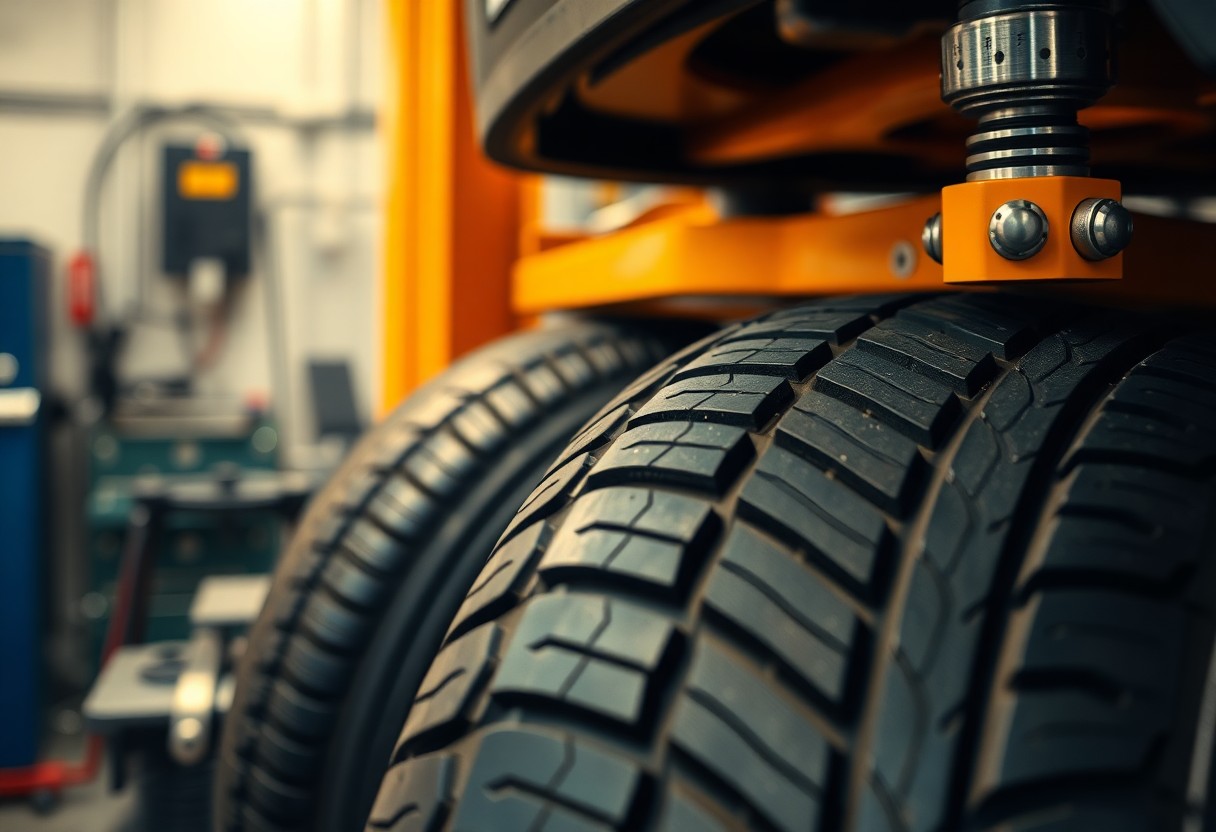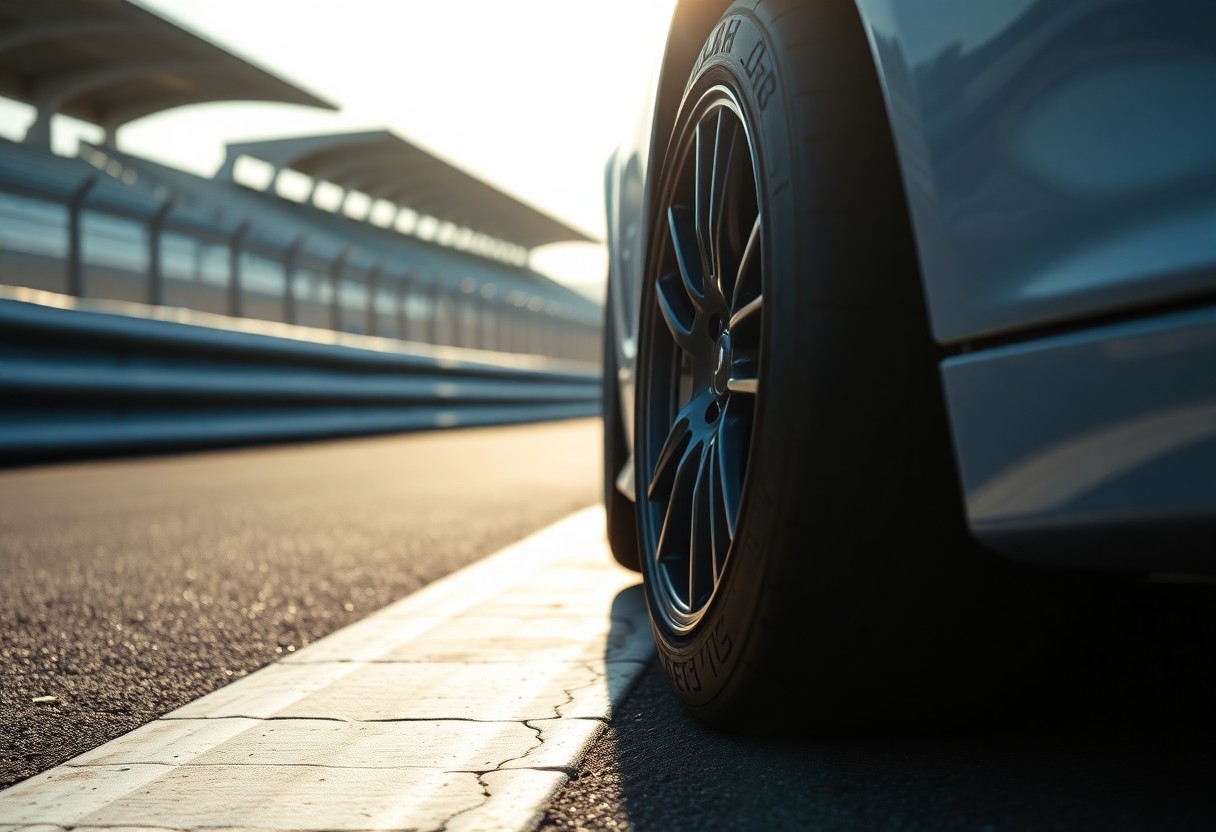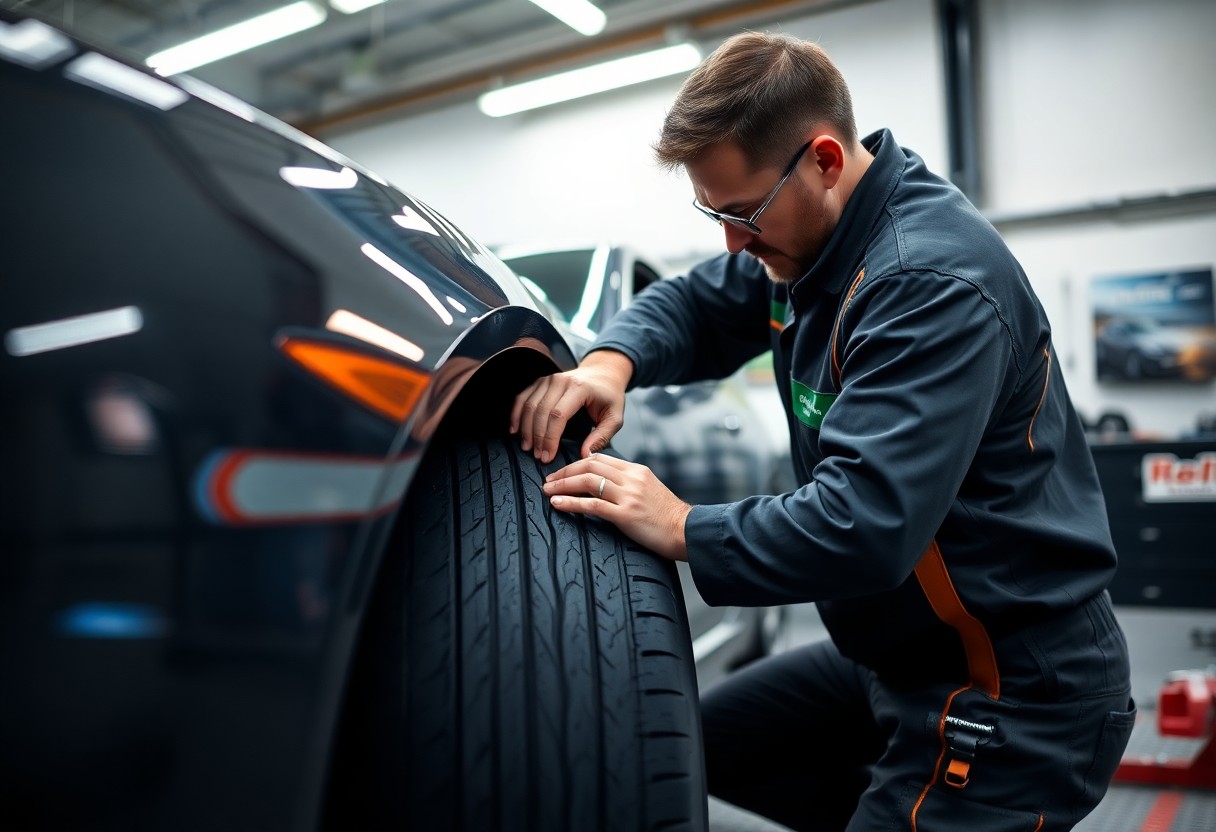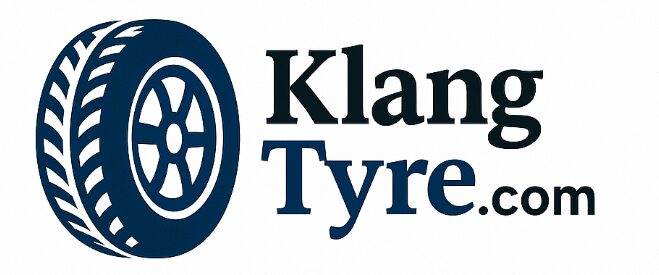With the right knowledge and care, fitting low profile performance tyres in Klang can significantly enhance your vehicle’s handling and aesthetics. These tyres can provide improved grip and cornering capabilities, but proper installation is necessary to ensure maximum safety and performance. By understanding the specific requirements for low profile tyres, you can achieve an optimal fit that suits both your driving style and preferences. This guide will equip you with the necessary insights for successful tyre fitting, ensuring your ride is both stylish and safe on the road.
Key Takeaways:
- Specialized equipment is necessary for fitting low profile performance tyres effectively.
- Proper tyre pressure and alignment are critical to performance and safety during driving.
- Expert technicians can prevent damage to the rim and tyre during the fitting process.
- A balanced tyre ensures improved handling and extends the lifespan of both the tyre and vehicle.
- Routine inspections post-fitting can help identify any issues early and improve overall tyre performance.
- Choosing the right tyre for your vehicle enhances traction, stability, and driving experience.
- Professional fitting services offer warranties and guarantees for peace of mind and performance assurance.
Decoding Low Profile Tyres: Performance Meets Design
Low profile tyres exemplify the harmonious blend of performance and design. Their enhanced grip and responsiveness come from the lower sidewall, allowing for improved handling and stability during high-speed maneuvers. These tyres not only appeal to sports car enthusiasts but also to everyday drivers looking to elevate their vehicle’s aesthetic and driving experience. With a variety of styles and tread patterns available, choosing the right low profile tyre can significantly impact both your vehicle’s performance capabilities and its visual appeal.
The Unique Characteristics of Low Profile Tyres
The defining feature of low profile tyres is their shorter sidewall, which leads to a wider contact patch with the road. Typically, they feature an aspect ratio of 50 or lower, resulting in a stiffer tyre that offers precise steering response. This design enhances performance by reducing sidewall flex during turns, ultimately contributing to better traction and cornering stability. However, the trade-off includes a potentially harsher ride quality due to the limited cushioning effect.
Benefits and Trade-offs for Performance-Driven Drivers
Low profile tyres are a top choice for performance-driven drivers seeking exceptional handling and aesthetic appeal. While these tyres provide enhanced cornering and braking capabilities, the drawbacks include a vulnerable sidewall prone to damage from potholes and a stiffer ride that might sacrifice comfort over longer distances. Additionally, wear rates might increase due to the aggressive driving styles often associated with these tyres. It’s a balancing act: while you enjoy improved performance, you’re also accepting certain limitations that could affect your overall driving experience.
Embracing low profile tyres means you’re prioritizing performance, which is often reflected in how your vehicle responds to different driving conditions. The benefit of increased road feedback translates to more confidence when taking sharp turns or accelerating out of corners. However, this performance boost can come with trade-offs in ride comfort, especially on rough roads or in everyday commuting scenarios. Maintaining your low profile tyres through regular inspections and ensuring proper tyre pressure are important to mitigating issues that arise from this trade-off, allowing you to reap the full benefits while minimizing potential drawbacks.

The Art of Tyre Fitting: Precision Matters
Precision is key in fitting low profile performance tyres, as even slight misalignments can impact handling and safety. Each tyre must be mounted flush with the rim, ensuring uniform contact with the road surface. This process involves careful calibration and attention to detail, as an inaccurate fit can lead to uneven wear, decreased traction, and compromised performance. Your commitment to precision not only enhances the lifespan of the tyres but also elevates your driving experience, allowing you to maximize the performance capabilities of your vehicle.
Essential Tools and Equipment for Fitting Low Profile Tyres
Utilizing the right tools eliminates potential pitfalls during the fitting process. A tyre mounting machine specifically designed for low profile tyres is a must, as it minimizes the risk of damage to both the tyre and rim. Additionally, you should have bead seaters, torque wrenches, and a digital pressure gauge on hand. Each of these tools plays an integral role in ensuring that your tyres are fitted correctly and securely, providing the utmost confidence when you hit the road.
Common Fitting Techniques and Best Practices
Employing effective fitting techniques significantly enhances the performance and safety of your low profile tyres. Load and bead seating are fundamental aspects; you need to secure the tyre’s bead properly against the rim during inflation to prevent leakage. A common practice involves applying a lubricant to the bead, making it easier to seat correctly. Always ensure the tyre pressure matches the manufacturer’s specifications prior to installation, and check alignment and balance meticulously to prevent premature wear.
Incorporating these techniques not only streamlines the fitting process but also extends the life of your tyres. For instance, the use of a tread depth gauge allows for precise calibration during fitting, ensuring each tyre has equal pressure and wear characteristics. Regularly rotating your tyres can also contribute to even wear, enhancing performance. Prioritizing these steps makes a tangible difference, resulting in a ride that’s both safer and more responsive, unlocking the potential of your performance tyres.

The Impact of Proper Tyre Pressure on Performance
Maintaining the correct tyre pressure is vital for optimizing the performance of low profile tyres. It impacts not only the handling characteristics but also fuel efficiency and overall tyre lifespan. Low profile tyres are designed to provide enhanced grip and improved feedback on the road, but this performance can be significantly compromised if your tyres are under or overinflated. Regularly checking your pressure ensures your vehicle handles predictably and responds accurately to your driving inputs.
Optimal Pressure Settings for Low Profile Tyres
For low profile tyres, optimal pressure settings typically range between 30 to 35 PSI, depending on the manufacturer and vehicle specifications. This range helps maintain the ideal balance between comfort and performance, ensuring that your tyres have the grip necessary for high-speed cornering while still absorbing road imperfections. Always consult your vehicle’s handbook to identify the right pressure for your specific tyre size and model.
Consequences of Incorrect Pressure on Handling and Safety
Incorrect tyre pressure can lead to severe handling issues and pose a serious safety risk. Overinflation can cause tyres to wear unevenly, leading to a harsh ride and reduced surface contact, while underinflation increases the risk of tyre blowouts and may cause your vehicle to handle poorly, particularly in wet conditions.
When your tyres are not inflated to the proper settings, the consequences can be alarming. For example, driving on underinflated tyres increases the contact area with the road, generating excessive heat and significantly heightening the risk of a blowout, especially at higher speeds. In contrast, overinflated tyres become rigid and lose traction, which is critical for quick direction changes during performance driving. This not only diminishes your ability to control the vehicle precisely but also enhances the likelihood of skidding or hydroplaning in adverse weather conditions. Therefore, vigilant pressure checks are important for both safety and optimal performance.
Navigating Tyre Maintenance in a Performance Context
Effective tyre maintenance in a performance context transcends basic upkeep, focusing on enhancing both safety and response. With low profile tyres, the importance of aligned performance and longevity cannot be overstated. Keeping an eye on more than just tread wear helps in maximizing your vehicle’s capabilities on the road. A robust maintenance routine incorporating checks and timely replacements can make all the difference in your driving experience.
Routine Checks: Ensuring Longevity and Performance
Performing routine checks on your low profile tyres aids in preserving their performance and extending their lifespan. Regular inspections should include checking tread depth, visual monitoring for uneven wear, and assessing sidewall integrity. Aim to inspect your tyres at least once a month or before long trips, ensuring they maintain optimal traction and stability. Maintaining a consistent schedule will enable you to catch issues early, preventing costly replacements down the road.
Signs It’s Time for Replacement: Don’t Wait Too Long!
Ignoring the signs of wear can lead to diminished performance and unsafe driving conditions. Keep an eye out for indicators such as bald patches, extensive cracking, and bulges. If your tyres are exhibiting any of these symptoms, it’s wise to consider replacement before they become hazardous. Additionally, tyre age is significant; most manufacturers recommend replacing performance tyres every 5 to 10 years, regardless of tread wear.
Timely tyre replacement goes beyond just aesthetics; it directly impacts your vehicle’s handling and control. Potholes, debris, and heat can all take a toll on your low profile performance tyres, leading to frequent air loss or structural failure. If you notice vibrations, excessive noise, or diminished grip during aggressive driving, these are strong indicators that it’s time for new tyres. Ignoring these subtle cues can significantly affect not only your performance but also your safety on the road, making early intervention even more imperative.

Expert Perspectives: Insights from the Tyre Fitting Industry
Engaging with professionals in the tyre fitting industry offers invaluable insights into the intricacies of low profile performance tyres. Many fitters emphasize the significance of accurate fitting techniques, highlighting that precision can affect both safety and performance. They often recommend investing in high-quality equipment and training, as the rapid evolution of tyre technology demands proficiency in the latest methods and tools.
Interviews with Leading Tyre Fitters: What You Need to Know
Leaders in the tyre fitting sector stress the importance of understanding each tyre’s unique specifications. They suggest that a thorough inspection prior to fitting can mitigate future issues, with experts noting that misalignment or improper mounting can lead to excessive wear or compromised handling. Consistent communication between fitters and customers is key in achieving optimal performance.
Trends Influencing the Future of Low Profile Tyre Technology
The landscape of low profile tyre technology is rapidly evolving, with innovations focused on enhanced performance and safety. Advances in materials, like the introduction of lighter and more durable compounds, allow for improved grip and handling. Additionally, eco-friendly tyre manufacturing processes are trending, reflecting a growing consumer preference for sustainability. As you shop for new tyres, staying informed about these trends can provide you with better options tailored to your driving needs.
Summing up
Ultimately, when you choose Klang Tyre Fitting for your low profile performance tyres, you benefit from expert technicians and state-of-the-art equipment tailored for your vehicle’s specific needs. You can trust their knowledge to ensure your tyres are fitted correctly, ultimately enhancing your vehicle’s performance and safety. This careful attention to detail guarantees that you enjoy optimal handling and responsiveness on the road. With Klang, your driving experience will be transformed, making every journey more enjoyable and efficient.
FAQ
Q: What are low profile performance tyres?
A: Low profile performance tyres are designed with a shorter sidewall height compared to the width of the tyre. This design enhances performance characteristics such as handling, cornering stability, and responsiveness, making them ideal for sports cars and performance vehicles.
Q: Why is proper fitting important for low profile performance tyres?
A: Proper fitting ensures that the tyres perform optimally and safely. Low profile tyres can be more sensitive to incorrect mounting, which can lead to uneven wear, reduced handling performance, and potential safety issues. Additionally, correct fitting aids in maintaining proper alignment and balance.
Q: What can I expect during the tyre fitting process at Klang Tyre Fitting?
A: During the fitting process, our experts will first inspect the condition of your wheels and new tyres. The tyres will then be mounted on the rims, ensuring that they are seated correctly for balance and alignment. We will also check the pressure and adjust as needed to match your vehicle’s specifications.
Q: Do I need to replace my wheel rims to fit low profile performance tyres?
A: Not necessarily. While many low profile tyres can be fitted to existing rims, ensuring compatibility is vital. It’s advisable to consult with our experts at Klang Tyre Fitting to determine if your current rims are suitable for low profile tyres or if an upgrade is recommended for optimal performance.
Q: How often should I have my low profile performance tyres inspected?
A: It is recommended to have your tyres inspected regularly, ideally every month, and more frequently if you drive in challenging conditions. Checking for wear, alignment, and pressure can help extend the life of your tyres and maintain performance. Seasonal changes may also necessitate more frequent inspections.
Q: Can low profile performance tyres perform well in different weather conditions?
A: Low profile performance tyres are primarily designed for dry conditions and may struggle in wet or snowy environments. There are specific low profile tyres designed for all-season use, but it’s advisable to consider dedicated winter tyres if you frequently drive in cold or snowy conditions.
Q: What size should I choose for my low profile performance tyres?
A: The size of your low profile performance tyres should match your vehicle’s recommendations, which can typically be found in the owner’s manual or inside the driver’s side door jamb. It’s vital to choose the right size to ensure proper handling, traction, and safety. Our team at Klang Tyre Fitting can assist you in selecting the appropriate size for your vehicle.
